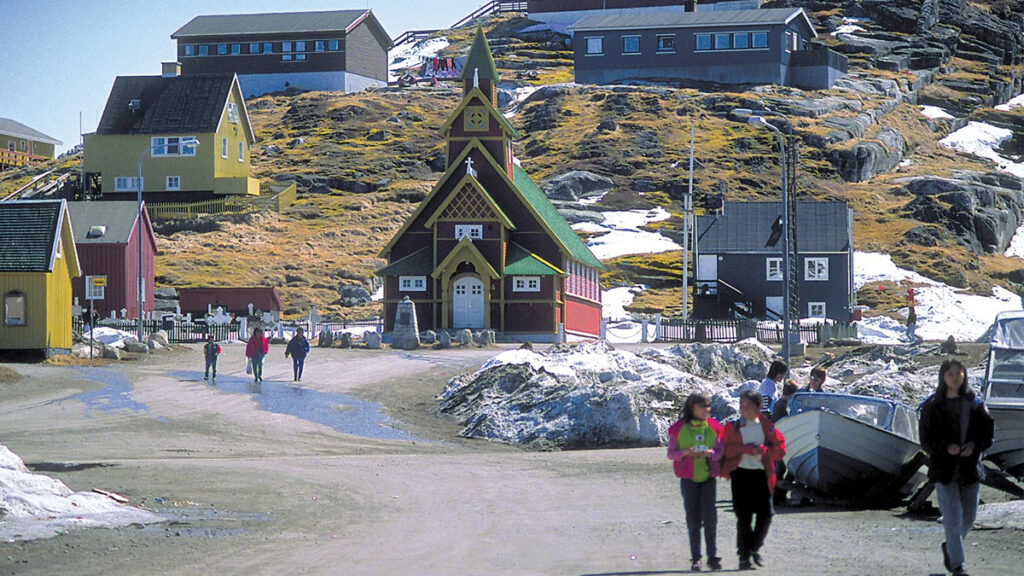Greenland, the world’s largest island and an autonomous territory of Denmark, has once again found itself at the center of geopolitical intrigue. Prime Minister Múte Egede recently declared his intent to accelerate Greenland’s path to independence, framing it as a necessary step toward self-determination and economic sovereignty. However, beneath his firm rhetoric lies a growing question: Is Egede preparing to align with U.S. President-elect Donald Trump in a potential deal to integrate Greenland into the United States?
Trump’s Greenland Ambitions: A Strategic Proposal Revisited
President-elect Donald Trump has repeatedly expressed interest in purchasing Greenland from Denmark, a proposal that sparked both international debate and diplomatic tension. While the idea might seem outlandish to some, Trump’s insistence raises important questions about Greenland’s geopolitical significance, economic potential, and the broader implications of such a deal.
Why Greenland Matters: Strategic and Resource Significance
Greenland’s strategic importance cannot be overstated. As Arctic ice melts, new shipping routes are opening, and the region’s vast reserves of rare earth minerals, uranium, zinc, copper, and iron ore are becoming increasingly accessible. The United States already operates the Pituffik Space Base (formerly Thule Air Base) in Greenland, a critical military installation monitoring threats from Russia and China.
Former National Security Advisor Robert O’Brien emphasized Greenland’s value, calling it a “highway from the Arctic all the way to North America.” With increasing Russian and Chinese activity in the Arctic, Greenland is seen as a key geopolitical asset.
Greenland’s Hidden Wealth and Sovereignty Concerns
Greenland is home to vast untapped mineral wealth. Aaja Chemnitz, a member of Greenland’s Parliament, highlighted the island’s resource potential, stating, “We have almost any kind of rare earth minerals that the U.S., but also EU, is looking for. However, any development must respect Greenlandic sovereignty.”
Chemnitz made it clear: “Greenland has never been for sale. Greenland will never be for sale. And it’s quite clear. We would like to have U.S. engagement and collaboration, but Greenland’s future must remain in our hands.”
Supporters vs. Opponents of Trump’s Plan
Supporters:
- Robert O’Brien: Denmark lacks the military capacity to defend Greenland from Russian and Chinese threats.
- Republican Strategists: U.S. ownership of Greenland would secure critical minerals and Arctic dominance.
- Trump Transition Team: Trump’s allies argue that such a deal would ensure American security and resource independence.
Opponents:
- Prime Minister Múte Egede: “Greenland will never be for sale. Our sovereignty is non-negotiable.”
- Danish Prime Minister Mette Frederiksen: Called the proposal “absurd” and diplomatically insensitive.
- Greenlandic Parliament Member Aaja Chemnitz: Insists Greenland’s future must remain under the authority of its people.
Historical Context: Not the First Time
The idea of purchasing Greenland isn’t new. In 1946, President Harry Truman offered Denmark $100 million for the island, but the offer was declined. Similarly, in 1867, the U.S. considered acquiring Greenland alongside Alaska.
Trump and his supporters argue that purchasing Greenland would mirror historic acquisitions like the Louisiana Purchase (1803), Alaska Purchase (1867), and U.S. Virgin Islands (1917).
The Economic Question: What’s Greenland Worth?
While Truman’s 1946 offer equates to roughly $1.4 billion today, Greenland’s immense mineral reserves and strategic location mean its valuation could easily reach tens or hundreds of billions of dollars.
Economist Iwan Morgan noted, “The United States bought Alaska for peanuts in 1867—about $125 million in today’s money. Greenland would be far more expensive.”
PBP Editor: Trump is already sending reps to Greenland and the word is that they were welcomed. If Trump were to offer, say, $5 million to each citizen, it would be cheap enough for the U.S. and would probably sway the vote.
